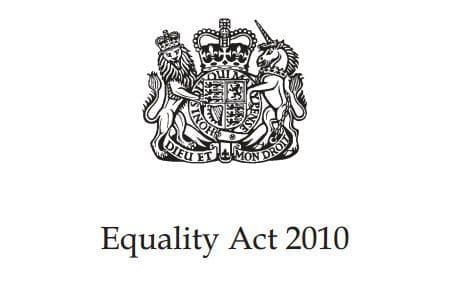Last updated: 20 September 2024
Selection criteria for redundancy
Unless the whole organisation is closing down employers will need to select who should be retained and who should be made redundant. To do this, you must draw up selection criteria against which employees will be assessed. Your selection criteria must be objective, and these should be agreed with the representatives of your employees.
Remember that although only employees who have had two years’ continuous service qualify for statutory redundancy payments, selecting disabled employees because of or for a reason arising out of their disability for redundancy might be disability discrimination regardless of their length of service.
The pool for selection and bumping
When selecting who is in your redundancy pool it is important to remember that if other employees do jobs that are the same or similar in other departments or areas of the business, you should consider widening the redundancy pool to include these employees. This is known as bumping.
For example, if an employer is thinking of making administrative staff in the finance department redundant because of a move to automation they should consider widening the pool to include administrative staff in other departments as well. The person or people who are finally selected for redundancy might not work in the finance department at all. However, if you choose to make someone in another department redundant you will have to show good reasons for why you have done this as you will have “bumped” them out of their job to redeploy the finance administrator into a role that wasn’t vacant.
Selecting someone from another department or area of the business like another branch or site who does the same job because of their performance, attendance, disability or reasonable adjustments is not a good reason. The decision must be a business or structural one and not based on individual performance or conduct.
Redundancy matrix
It is good practice to develop a redundancy matrix which lists the selection criteria that you have decided to use in order to decide who should be made redundant. You can then allocate a score, usually on a scale of 1 to 10, to each employee against each selection criterion. If certain criteria are particularly important to your business, you can give them extra weight in the scoring process. The completed matrix will show the employees with the lowest scores, who you can then provisionally select for redundancy.
When allocating scores, disabled employees should not be marked down for having reasonable adjustments. In some cases, you may need to adjust a disabled employee’s score as a reasonable adjustment.
This means that the people responsible for selecting employees for redundancy must know about the reasonable adjustments needed by those employees at risk. If managers of employees are not involved in the selection process they should be consulted about their staff and asked if their staff have any reasonable adjustments that you must take into consideration.
The individual must of course also be asked about their adjustments or anything else that they think the selectors should take into consideration when making their assessment at the individual consultation stage. Some disabled people will have Tailored Adjustment Plans that record agreed adjustments and where these exist, they should be taken into consideration. Remember, however that not all disabled people will have such plans, even if you as a business use them, because a disability is newly acquired for example or because they might not have talked until now to their manager about adjustments they need.
Employers need to be cautious about making assumptions about disabled people and the roles they can and do perform
Deciding selection criteria
Selection criteria must be justifiable and, as far as possible, objective. They must also be applied consistently, fairly and systematically. Failure to do so may lead to claims for unfair dismissal and discrimination.
You can select criteria that reflect the needs of the business, but it is important to apply them consistently and to be clear about what can and cannot be taken into consideration.
Listed below are commonly used selection criteria and suggestions for reasonable adjustments you may need to make to ensure that they do not discriminate against disabled employees.
Remember that you must make reasonable adjustments for a disabled person if you know, or could reasonably be expected to know, that the person is disabled and that the criterion applied will place them at a substantial disadvantage because of their disability compared to people without a disability. In deciding whether a possible adjustment is reasonable you need to consider the:
- Effectiveness of the adjustment in preventing the disadvantage.
- Practicality of the adjustment.
- Financial and other costs of the adjustment and the extent of any disruption caused.
- Extent of the employer’s financial or other resources.
- Availability to the employer of financial or other assistance to help make an adjustment, for example through the Access to Work (AtW).
Commonly used selection criteria

Length of service
Many employers choose a ‘last in first out’ policy. You should bear in mind, however that this might be potentially discriminatory against younger employees who are more likely to have shorter service unless your decision can be justified.
Skills, knowledge, training and qualifications
It is reasonable to take an employee’s skills, qualifications or knowledge and their value to the organisation into account. Remember, however, that some disabled employees might have been unable to acquire some skills or qualifications because of their disability, for example a driving licence or because a training course was inaccessible. A disability may also have meant that an employee’s ability to access the education system was limited and so have resulted in them having fewer or no formal qualifications.
This criterion will place such employees at a substantial disadvantage as they will score badly against it. You will need to consider how vital these qualifications are in the workforce that is to remain and if it would be reasonable not to apply this criterion to those disabled people substantially disadvantaged by it in this way, or to adjust their scores to reduce the disadvantage.
Experience
Experience can often be a better indicator of an employee’s performance and abilities than qualifications. Remember to consider experience obtained outside your organisation. Many disabled people have considerable experience of planning and problem solving or management outside work, particularly if they have a support worker or assistant.
Attendance
Employers can use attendance as a selection criterion. You will need to think carefully, however, about the period over which attendance is reviewed, for example, the past year, a set number of years or the whole of the time the employee has worked for you and weight the results accordingly.
You should also exclude the following disability related absences which you may have permitted as reasonable adjustments:
- Disability leave. For example, time off for a planned operation or to train an assistance animal.
- Reasonable adjustment leave including redeployment leave. This means time off work while reasonable adjustments were being sourced and implemented or a suitable alternative vacancy was being found.
- Leave because the employee was shielding or living with someone who was shielding and could not do their job from home or because the person was otherwise unable to do their job from home because of a disability during lockdowns.
Disability leave is planned leave for a disability related reason for a fixed period of time that was known about in advance. This could have been intermittent absences for short periods over a fixed period of time, for example, every Wednesday afternoon for six weeks for hospital appointments, or a longer period of absence, but again for a fixed period of time that you knew about in advance, such as four weeks to be trained how to use a guide dog.
Reasonable adjustment leave including redeployment leave is time when the employee was unable to work because they were waiting for reasonable adjustments to be made, for example for IT or other equipment to arrive and be installed. It also includes absences while an employee waited for a suitable alternative vacancy to be found for them as a reasonable adjustment because they were no longer able to do their existing job because of their disability.
You should also consider discounting some or all disability related sickness absences. If an employee’s disability has meant that they have taken more time off sick than someone without that disability, then this criterion may place them at a substantial disadvantage.
In this situation you should consider if it is reasonable in all the circumstances to discount some, or all, of the employee’s disability related absences. Again, the efforts you have made to enable the employee to reduce the amount of time they took off sick by making other reasonable adjustments will be a factor in deciding how reasonable it is to discount these absences.
If you use objective/equation-based models such as the Bradford Factor, consider discounting all disability-related leave from the calculation and only include non-disability related sick leave.
Timekeeping
Remember that some of your employees may work flexible hours either as a reasonable adjustment because of a disability or for some other reason such as childcare or other caring obligations. This may have been particularly so during periods of working from home during lockdowns when schools were not open.
Examples of disability related flexible working:
- Someone who finds it difficult to stand for long periods may start and finish later than the contractual hours worked by everyone else so that they can get a seat on public transport.
- Someone who wishes to travel at quiet times to avoid contact with fellow travellers might stagger their start and finish times.
- Someone with a fluctuating condition might work longer hours when they feel well and ‘bank’ this time so that they can take time off later.
In many cases these reasonable adjustments will have been agreed between the individual and their line manager. Line managers and employees at risk must be asked if such arrangements are in place and you must ensure that these employees are not marked down for poor timekeeping.
Remember too that some employees who are not disabled themselves may be carers for disabled family members and so might work flexibly. Direct discrimination against someone who is associated with a disabled person such as selecting them for redundancy because of their caring responsibilities is unlawful under the Equality Act 2010.
Disciplinary record
You can take an employee’s disciplinary record into account in the selection process but again you will need to decide on the period over which such records will be assessed. You can award points in relation to the severity of the warning, but you should not take ‘spent’ warnings into account.
An employee may have been disciplined for various reasons before it was known that they had a disability, such as:
- Poor performance.
- Attendance.
- Timekeeping.
- Behaviour at work.
In such situations you should reconsider the warning given at the time and if the reason for it was related to the disability, downgrade the warning retrospectively as a reasonable adjustment and award points in the redundancy selection process accordingly.
Future potential
You may wish to retain new or newly trained employees because you have invested time and resources in them and believe that they will be valuable to the organisation in the future. You should take care, however, to avoid negative stereotypes about the potential of disabled employees. Do not assume that someone with a disability will not be able to develop and learn new skills to progress in your organisation.
Flexibility
Flexibility is a reasonable selection criterion. Employers might be more likely to be able to retain employees who demonstrate flexibility and are easier to redeploy because they are able, for example, to:
- Learn new skills or have skills that mean they can work in more than one area of the business.
- Work shifts, evenings or weekends.
Re-locate to another part of the city, country or abroad. - Take on more responsibility, for example, managing more staff.
- Work differently, such as from home or by using technology
You should consider if it would be a reasonable adjustment is possible such as delivering a service in a different way and if not if it would be reasonable to discount lack of flexibility if the reason for that is disability related. For example, because a person with a mobility impairment would find it more difficult to relocate or if a person’s disability means that they cannot work long hours or shifts or the technology they are required to use is not accessible
Performance
Employers often take into account performance indicators such as:
- Revenue generation.
- Productivity.
- Completion of projects on time and to budget.
- Meeting or exceeding objectives and targets.
Again, you can assess disabled employees against these criteria in the same way as you do non–disabled people. However, it might be a reasonable adjustment to adjust the scoring on a redundancy matrix if a disabled employee has been:
- Placed in a non–revenue generating role as a reasonable adjustment, or
- Unable to meet objectives and targets because reasonable adjustments had not been implemented.
Failure to do so could lead to claims for discrimination arising out of disability.
Beware too of selecting older or disabled employees for redundancy because their productivity levels have dropped, particularly during lockdown when they were working from home. One third of people between the ages of 50 and 64 have a disability. These people might not describe themselves as disabled but if you could reasonably be expected to know that they have a disability you have a duty to make reasonable adjustments for them. Declining productivity could be an indication that they are having difficulty doing their job and need reasonable adjustments. Failure to make them and selecting these employees for redundancy on this basis could result in claims for both disability and age–related discrimination.
If you require this content in a different format, contact enquiries@businessdisabilityforum.org.uk.
© This resource and the information contained therein are subject to copyright and remain the property of the Business Disability Forum. They are for reference only and must not be copied or distributed without prior permission.

